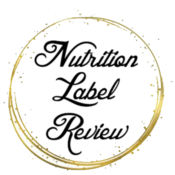In 2016, the FDA announced that it has finalized new rules that will make significant changes to nutrition labeling for the first time in more than 20 years, so what are these key changes?
- Removing the mandatory declaration of “Calories from fat” because research is showing that the type of fat consumed is more important than the amount.
- Revising the format of the Nutrition Facts labels to increase the prominence for the declaration of Calories and Serving Size thus highlighting the information.
- Requiring the declaration of the gram (g) amount of “added sugars” in a serving of a product, establishing a Daily Reference Value (DRV) for added sugars, and requiring the percent Daily Value (DV) declaration for added sugars; because based on research it is difficult to meet nutrient needs while staying within caloric limits if more than 10% of your daily calories coming from added sugar.
- Updating the list of vitamins and minerals mandatory on the label. Vitamin A and Vitamin C are no longer required, instead Vitamin D, Calcium, Iron, and Potassium are the new mandatory nutrients. The amount in grams in addition to the %DV is now required.
- Updating certain reference values used in the declaration of percent DVs of nutrients on the Nutrition Facts labels. Seven RDIs increase, sixteen decrease, three remained unchanged, and one was added. For DRVs, three remained unchanged, two increased, two decreased, and one was added.
- Removing the requirement for the footnote table listing the reference values for certain nutrients for 2,000 and 2,500 calorie diets. The footnote at the bottom has changed to better explain the meaning of %DV, which helps allow for understanding the nutrition information in the context of a total daily diet.
- Requiring the maintenance of records to support the declarations of certain nutrients. This requirement is to verify mandatory declaration of added sugars as well as for certain fibers, vitamin E and folic acid and folate for which analytical methods not available.
- Amending the definition of a single-serving container. Serving sizes have been updated to reflect what people actually eat and drink today, not what they should be eating.
- Requiring dual-column labeling for certain packages
- Amending several reference amounts customarily consumed that are used by manufacturers to determine their label serving size. There are 30 changes to the current 159 RACCs, with an additional 25 being added to the list.
- Establishing an effective date of July 26, 2016 and a compliance date of 2 years after the final rule’s effective date, except that manufacturers with less than $10 million in annual food sales have a compliance date of 3 years after the final rule’s effective date.

